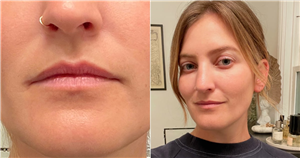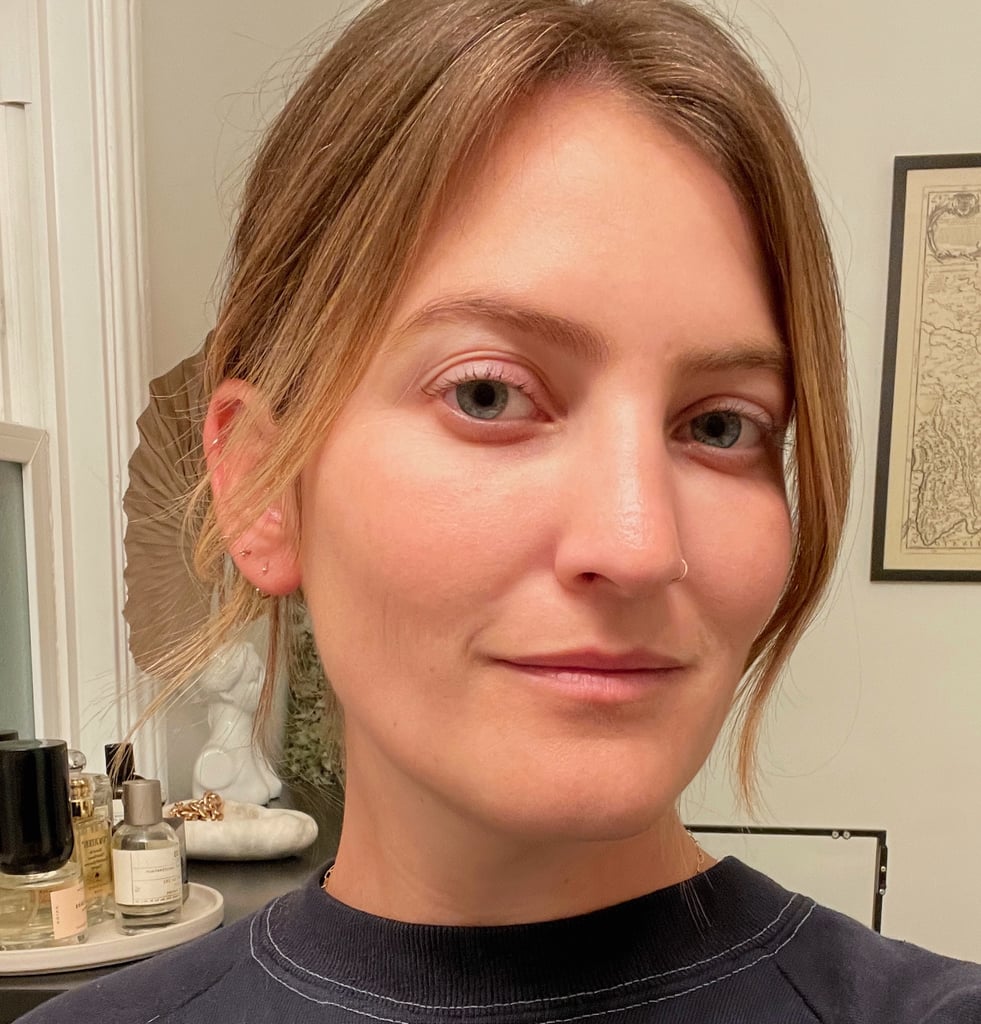I Got Cheek Fillers to Smooth My Smile Lines — Here’s What to Know About the Process
- Cheek fillers are temporary dermal fillers that sit just below the skin’s surface.
- They can be used to contour the face, fill lost cheek volume, or address other concerns like smile lines.
- Cheek fillers can last anywhere from six months to two years.
As far as cosmetic treatments go, dermal fillers can do wonders at reviving lost volume and enhancing different areas of the face. However, fillers also have the ability to augment some other secondary things along the way, like smile lines around the mouth (a wrinkle that gets deeper as you get older). Enter: cheek fillers.
While the primary purpose of cheek fillers is to build up lost volume in the face, dermatologists often turn to them to help lift the nasolabial fold and smooth those smile lines as well. This is exactly what I tasked Nancy Samolitis, MD, FAAD, a board-certified dermatologist and owner of Facile Dermatology + Boutique, with as I embarked on my cheek filler journey.
Keep reading to find out everything you need to know about getting cheek filler, plus exactly what it was like to get the procedure for the first time.
What Are Cheek Fillers?
There are a few different types of dermal fillers that can be used on the cheek area. The most popular are made with hyaluronic acid, which is a naturally occurring substance in your body and can hold up to 1,000 times its own weight in water.
“We know that hyaluronic acid works well with our tissues and most people don’t react badly to it,” Dr. Samolitis said. She prefers to fill the cheeks with Restylane Contour, since it tends not to make people swell very much, it feels really natural, and it often lasts longer than other fillers in the Restylane or Juvéderm families. A perk of hyaluronic acid fillers is that if in the unlikely case you really don’t like the results, they can be dissolved with an enzyme called hyaluronidase.
The other filler that is sometimes chosen is Sculptura, which is made from polylactic acid and works by stimulating your skin’s natural collagen production — this means it works gradually, so it takes a lot more time to see results.
What Skin Concerns Can Cheek Fillers Address?
“Typically what we’re trying to achieve in the cheek is restoration of volume that has dissipated due to age,” Dr. Samolitis said. Cheek fillers can also be used to create a more contoured effect on the cheekbones, and lift nasolabial folds and jowls.
Placement is key when it comes to the results you’ll see. “I always look at people’s natural anatomy [to determine where to place filler],” Dr. Samolitis said. “The area we’re talking about for cheek fillers is actually pretty large.” She explained that there are two main regions of the face where cheek filler can live: the mid-cheek (i.e. the more front and center apples of the cheeks) and the lateral cheeks (i.e. the cheekbones and upward almost to the temples).
Injecting filler into the mid-cheek will replace a lot of that lost volume from aging, and can even help brighten up undereye circles due to hollowness. It will also cause more light to reflect off the face. However, Dr. Samolitis said that “more is not better here, because then you can start to look puffy and overfilled.”
For the lateral cheek, there are two spots that Dr. Samolitis likes to inject: directly on top of the cheekbone and right under it. “A lot of people feel like their skin is sagging, but they have a big cheekbone,” she said. “So if you put filler on that cheekbone, it’s going to make the rest of their face look skinnier because now you’ve accentuated that contrast between the hollowness of their lower face and the plumpness along the cheek.” Alternatively, injecting filler just below the cheekbone can help lift sagging jowls.
No matter your goal, it’s important to stay realistic about your expectations around what cheek fillers can and cannot achieve. Cheek fillers aren’t meant to fix something major like advanced sagging jowls or very deep wrinkles, so it’s important to talk to your doctor about what is possible.
Who Is and Isn’t a Good Candidate For Cheek Fillers?
Dr. Samolitis said that generally everyone is a good candidate for fillers. The only people who may want to steer clear are those who are allergic to lidocaine, since most hyaluronic acid fillers contain the numbing agent. There are a few types of fillers that don’t have lidocaine (like Sculptura), so Dr. Samolitis said to talk to your doctor about other options. She also said that people who have active autoimmune diseases that make them prone to inflammation should talk to their doctor before getting fillers since they might have more intense swelling.
How Long Do Cheek Fillers Last?
How long fillers last really depends on the placement, and how much natural movement the area gets. Lip fillers, for example, will dissolve more quickly than low-movement spots like cheeks or under the eyes simply because you move your mouth a lot every day. For cheek fillers specifically, Dr. Samolitis said that since these are really just sitting on top of the bone, people can expect them to last about a year (although she’s seen cheek fillers last for up to two years).
How Much Do Cheek Fillers Cost?
Cosmetic treatments in general vary in price depending on where you live, with bigger cities at the highest price point. Otherwise, fillers are billed by how many syringes you use. Depending on the type of filler you’re getting, one syringe can run anywhere from $700 to $1,200. Your doctor will determine how many syringes you need according to the results you’re looking for — for example, I wanted a very subtle effect, so Dr. Samolitis only used one syringe. But if you’re trying to replace a significant amount of volume, you’ll likely need several.
Source: Read Full Article

